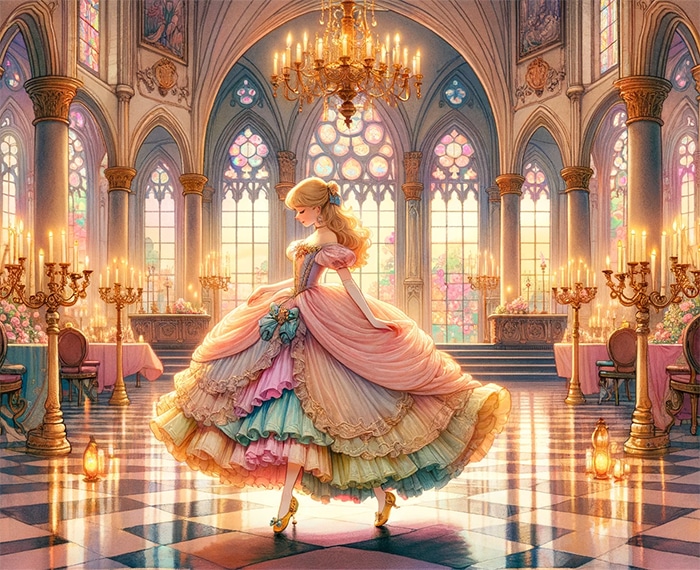Short Summary of Cinderella (Brothers Grimm version)
Cinderella, a timeless fairy tale, has been a cornerstone of folklore and children’s literature for centuries. Here, I offer a short summary of Cinderella’s plot – the darker Brothers Grimm version, not the sanitized Disney adaptation. Let’s take a quick overview of this classic!
Short Summary of Cinderella
The Brothers Grimm’s Cinderella, also known as Aschenputtel in German, is distinct from its more kid-friendly counterparts. It presents a tale steeped in both hardship and mystical assistance. Cinderella endures life under her cruel stepmother and stepsisters, who reduce her to a mere servant, even in her father’s presence. Her resilience and kindness shine through despite these trials.
A key aspect of this version is the aid Cinderella receives. There is no fairy godmother or whimsical pumpkin carriage here. Instead, she gets help from a flock of birds. These birds, linked to a magical tree grown on Cinderella’s mother’s grave, symbolize her mother’s continued guardianship.
When the royal festival is announced, Cinderella’s pleas to attend are cruelly denied by her stepmother. In her despair, Cinderella turns to the tree and prays for assistance. In response, the birds bestow upon her three magnificent dresses, one for each day of the festival, and gold and silver slippers. These gifts enable her to attend the festival in disguise, charming the Prince each night.

The interactions between Cinderella and the Prince at the festival are marked by a blend of enchantment and elusiveness. Cinderella, in her resplendent attire, captures the Prince’s heart but manages to slip away each night, maintaining her anonymity. On the final night, in her haste, she leaves behind a golden slipper, setting the stage for the story’s climax.
The stepmother’s abuse escalates when the Prince arrives to find the slipper’s owner. In a disturbing display of cruelty and ambition, she forces her daughters to mutilate their feet to fit into the slipper. Despite these brutal efforts, the birds, allies of Cinderella, expose the stepsisters’ deceit by alerting the Prince to the blood in the shoe.
Cinderella’s fitting of the slipper unfolds seamlessly, revealing her identity to the Prince. Their reunion leads to marriage, symbolizing Cinderella’s rise from oppression to royal status. The stepsisters, in a final act of retributive justice, suffer a fate as grim as their actions. During Cinderella’s wedding, the doves peck out their eyes, serving as a stark reminder of the consequences of malevolence and deception.
Also check out our summary of The Ugly Duckling!
Key Themes of Cinderella (Brothers Grimm Version)
- Justice and Retribution: The story emphasizes the moral law of cause and effect, where malevolent deeds, like those of the stepsisters, lead to dire consequences.
- Resilience and Hope: Cinderella’s enduring spirit, despite her adverse circumstances, forms the backbone of the narrative.
- Nature as Protector: The birds and the magical tree represent the protective spirit of nature and familial bonds.
- Contrast of Deceit and Honesty: The narrative highlights the consequences of deceit, as seen in the stepsisters, and the rewards of honesty and virtue, as embodied by Cinderella.
- Virtue Rewarded: The story underscores the idea that true virtue and kindness are eventually recognized and rewarded.
Fun facts about Cinderella:
- Compilation Process: The Brothers Grimm, Jacob and Wilhelm, compiled their fairy tales from various folk stories they gathered, mainly from oral traditions across different regions of Germany. Their aim was to preserve these tales as part of the cultural heritage.
- Initial Publication: The first edition of their collection, “Kinder- und Hausmärchen” (Children’s and Household Tales), was published in two volumes, the first in 1812 and the second in 1815. This collection included Cinderella among many other now-famous fairy tales.
- Revisions and Editions: The Grimms continuously revised their collection, and it went through seven editions during their lifetime. With each edition, they refined the stories, sometimes making them more child-friendly.
- Cultural Impact: The Grimm fairy tales, including Cinderella, have also had a significant impact on the cultural and literary landscape, influencing countless adaptations and interpretations in literature, film, and theater.
✅ Worth checking out!
- Hardcover Book
- Grimm, Jacob (Author)
- English (Publication Language)

